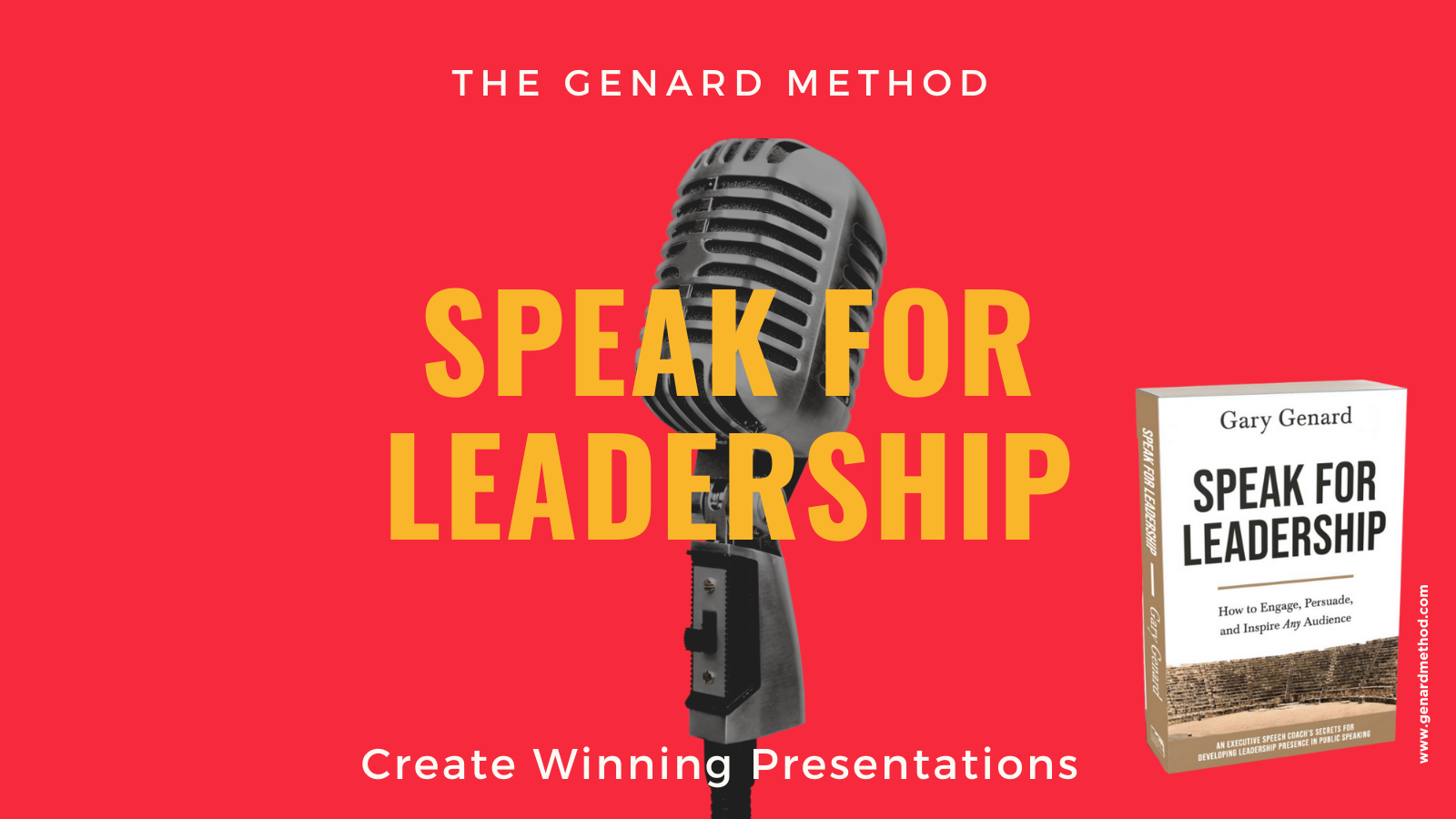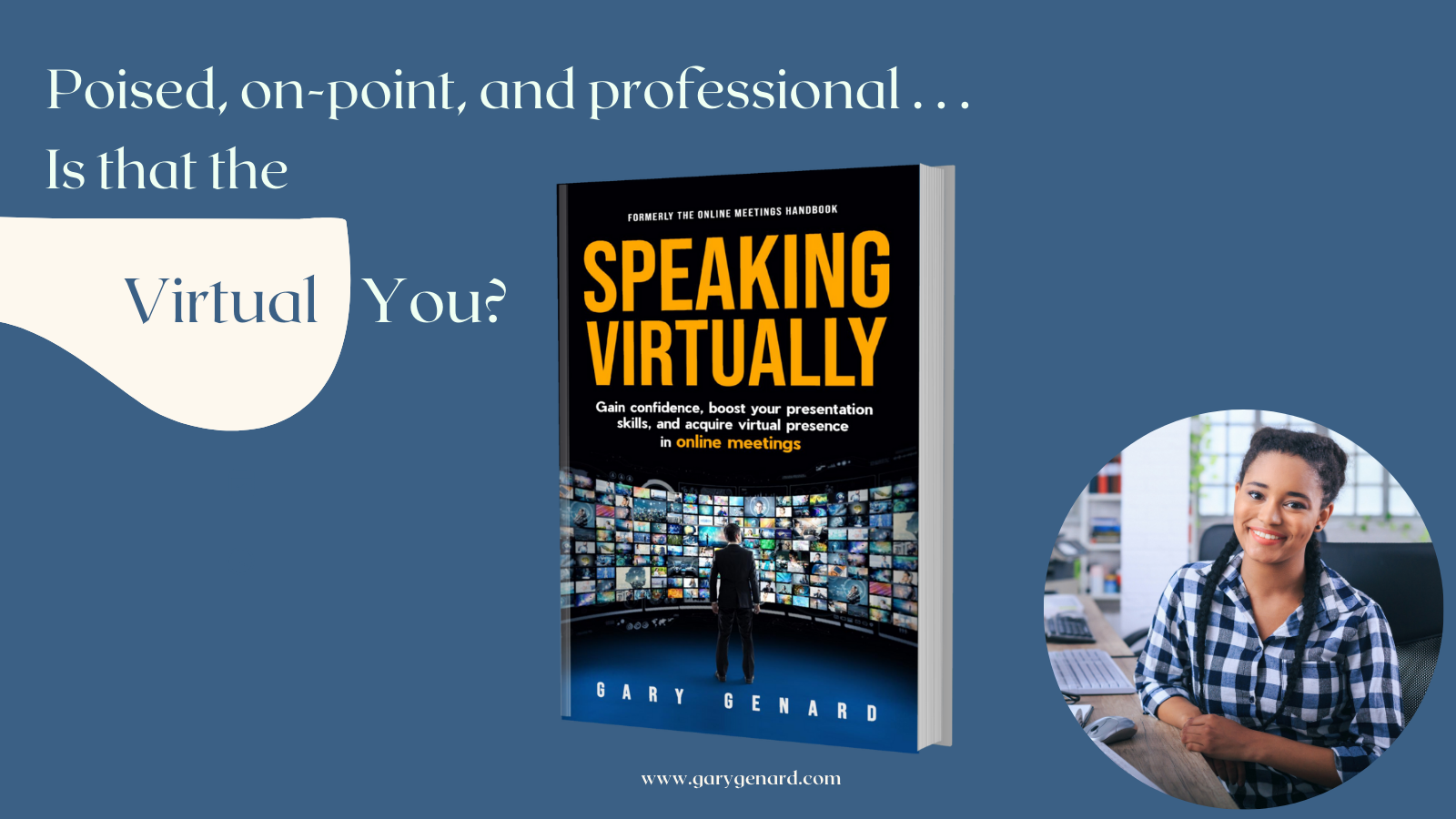Are your presentations designed to wow listeners? Here are three foolproof ways to capture any audience's engagement and interest!
You know the warning printed on outside rearview mirrors—the one about objects being closer than they appear? Did you ever think that your speeches and presentations are like that?
When you've put in long hours on your content and (I hope you have) practiced, your talk may just be too big and too close for you to see it properly. By "properly," I mean looking at it in terms of how it will affect your audience.
Do you create winning presentations? Learn an executive speech coach's secrets for success. Get a signed copy of Speak for Leadership. Or find it here on Amazon.
Are You Using the Right End of the Telescope?
Of course, if you've prepared without your audience fully in mind, you've already taken a long hike down the wrong road. The time to consider your speech's effect on the audience is before you write down a single thought or word. That's because your specific purpose in giving this talk should be the whole reason you're speaking.
Everything should flow from your purpose concerning your content and the shape of your talk —including the words and references you choose because they will resonate with this audience. (Speaking of taking the right route rather than the wrong one, here are 25 words and phrases you should avoid in your speeches and presentations.)
Want to deliver your ideas with maximum impact? Download my Free Guide, How to Outline a Speech for a Great Performance. (Hint: You need to use the rhythms of speech!)
Assuming this has been case (and what follows works best if it has), you're now ready to include three key elements that every one of your presentations should contain. Together, they are sure winners when it comes to engaging, interesting, inspiring, and exciting listeners.
(1) Use a Grabber. I've written extensively about the need to "grab" or "hook" your audience immediately in my books, How to Give a Speech and Speak for Leadership, where I devote entire chapters to how to create dynamic introductions and conclusions.
There are many reasons why you need to start your presentation more skillfully than is usually done. Not least among them is that you don't want your talk to look and sound like every other one that's ever been given in this industry. But even more important is this realization: you need to launch your speech so it reaches critical altitude fast. If it doesn't, there's likely to be weak or no interest by the audience in everything you're about to say! Follow the links in the previous paragraph to learn more about great grabbers.
What about online meetings and presentations? Boost "The Virtual You" with the handbook for online presentations, Speaking Virtually. Be poised, on-point, and professional!
(2) Give Listeners a Roadmap. A critical problem in a typical presentation, is that there's just so much information for listeners to absorb. And we really, really need to make it easier for them. (See how thinking in terms of your audience BEFORE you pile on the content is so important?) The best way you can do that at the start of your speech—when it really matters—is to provide them with a roadmap.
Will you be using speaker's notes or a manuscript? Get my Free resource, "How To Read A Speech And Still Be An Effective Speaker." Learn the skills actors use to read every word!
You can call this element a blueprint or diagram, but I like "roadmap" because it implies the journey you and your audience are about to take together. So what is a roadmap in terms of a speech? It's simply mentioning the main points or segments of your talk up front, without going into them into depth (that's the main body of your speech). And it's uncomplicated. Once you reveal your topic, say something like, "I'm going to be covering three important aspects of this topic in the next half-hour . . . " Audiences can then stay with you every step on that "road" you take them down. Each of the three points you mentioned is then a way-station on that road; and importantly, this model makes retention of those key points much easier.
(3) Satisfy Their "WIIFM." That stands for "What's-In-It-For-Me," and it's the state of mind your audience is in, all the time and for every speech. Can you imagine a speaker who thinks of their own success in the speech and doesn't consider this aspect of audience psychology? Uh, that's right: many of us are guilty of this fault a lot of the time!
The vast majority of speakers don't even consider the WIIFM. But you will, right? After you've given them the roadmap, you deliver up a great big helping of satisfaction and personalization. How? By saying this: "The reason I want to share these ideas with you today, is because I think it will help you tremendously in your work [make your life easier, put your team in the spotlight, etc.]. Believe me, once people understand how your speech will benefit them, they will listen!
So there are the steps, starting right after your greeting: Grabber, Roadmap, and WIIFM. Three foolproof ways to capture any audience's engagement and interest.*
* And a friendly reminder: Do your best to understand this audience's needs, preferences, and expectations. Once you do, you can live in their world so that what you say resonates with them!
You should follow me on Twitter here.
Gary Genard is an actor, author, and expert in public speaking and overcoming speaking fear. His company, The Genard Method offers live 1:1 Zoom executive coaching and corporate group training worldwide. He was named for nine consecutive years as One of the World’s Top 30 Communication Professionals, and also named as One of America's Top 5 Speech Coaches. He is the author of the Amazon Best-Seller How to Give a Speech. His second book, Fearless Speaking, was named in 2019 as "One of the 100 Best Confidence Books of All Time." His handbook for presenting in videoconferences, Speaking Virtually offers strategies and tools for developing virtual presence in online meetings. His latest book is Speak for Leadership: An Executive Speech Coach's Secrets for Developing Leadership Presence. Contact Gary here.
Main photo credit: Mason Kimbarovsky on unsplash.com






